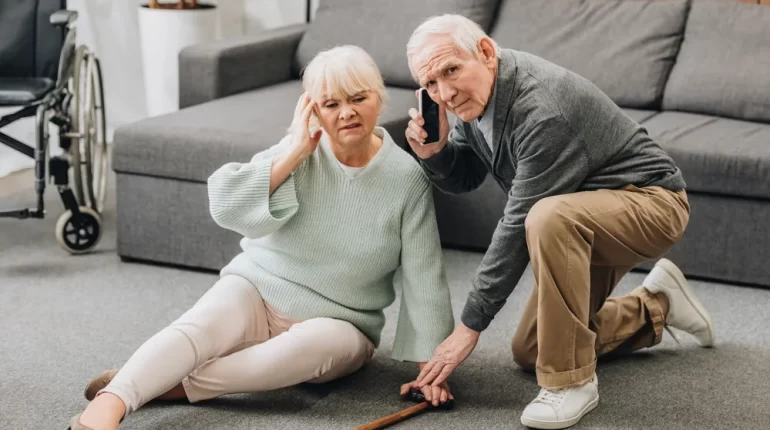As the global population ages, ensuring the safety and well-being of the elderly becomes increasingly important. The elderly population faces unique challenges that require special attention to maintain their health, safety, and quality of life. This article provides valuable tips and resources to help safeguard the elderly and promote a secure, fulfilling life.
The Importance of Elderly Safety
Elderly safety encompasses various aspects of daily life, from preventing falls and accidents to ensuring emotional and mental well-being. As people age, they may experience physical limitations, cognitive decline, and increased vulnerability to accidents and abuse. Addressing these challenges is crucial for maintaining their independence and dignity.
Common Risks Faced by the Elderly
Falls and Accidents: Falls are the leading cause of injury among older adults. Decreased muscle strength, balance issues, and vision impairments can increase the risk of falls.
Medication Management: Older adults often take multiple medications, which can lead to confusion, incorrect dosages, and dangerous drug interactions.
Chronic Health Conditions: Many elderly individuals suffer from chronic conditions such as diabetes, heart disease, and arthritis, which require careful management and monitoring.
Isolation and Loneliness: Social isolation can lead to depression and other mental health issues. Limited mobility and the loss of loved ones often contribute to feelings of loneliness.
Elder Abuse: Unfortunately, some elderly individuals are at risk of physical, emotional, or financial abuse by caregivers, family members, or strangers.

Tips for Ensuring Elderly Safety
Fall Prevention:
Home Modifications: Install grab bars in bathrooms, secure loose rugs, improve lighting, and remove tripping hazards.
Exercise: Encourage regular physical activity to improve strength, balance, and coordination. Activities such as walking, yoga, and tai chi are beneficial.
Assistive Devices: Use canes, walkers, or other mobility aids as needed to enhance stability.
Medication Safety:
Organizers: Use pill organizers to sort medications by day and time, reducing the risk of missed doses or double dosing.
Medication Review: Schedule regular medication reviews with healthcare providers to ensure all prescriptions are necessary and check for potential interactions.
Health Management:
Regular Check-Ups: Ensure routine medical appointments to monitor chronic conditions and address any new health concerns promptly.
Healthy Diet: Maintain a balanced diet rich in fruits, vegetables, lean proteins, and whole grains to support overall health.
Social Engagement:
Stay Connected: Encourage regular contact with family and friends through visits, phone calls, and video chats.
Community Programs: Participate in community centers, senior groups, and volunteer activities to stay socially active and engaged.
Financial Safety:
Guard Against Scams: Educate the elderly about common scams and frauds. Encourage them to verify the identity of callers and avoid sharing personal information.
Financial Management: Set up systems for managing finances, such as direct deposit for benefits and automatic bill payments, to reduce the risk of financial abuse.
Elder Abuse Prevention:
Awareness: Be aware of the signs of elder abuse, such as unexplained injuries, sudden changes in behavior, or withdrawal from usual activities.
Reporting: Know how to report suspected abuse to the appropriate authorities, such as Adult Protective Services.
Resources for Elderly Safety
Numerous resources are available to help ensure the safety and well-being of the elderly. Here are some key organizations and tools:
National Institute on Aging (NIA): Provides information on aging, health, and safety tips. NIA Website
Centers for Disease Control and Prevention (CDC): Offers resources on fall prevention, chronic disease management, and healthy aging. CDC Website
AARP: A nonprofit organization dedicated to empowering older adults, offering resources on health, safety, and financial security. AARP Website
Eldercare Locator: A public service of the U.S. Administration on Aging, connecting older adults and their families to local services and resources. Eldercare Locator Website
National Council on Aging (NCOA): Provides resources and programs to improve the lives of older adults. NCOA Website
Local Area Agencies on Aging (AAA): Offer a range of services, including meal programs, transportation, and caregiver support. Find your local AAA through the Eldercare Locator.
Ensuring the safety and well-being of the elderly is a multifaceted task that requires attention to physical health, mental well-being, and social connections. By taking proactive steps to prevent falls, manage medications, engage in regular health monitoring, and stay socially connected, older adults can enjoy a higher quality of life and maintain their independence. Utilizing available resources and support systems further enhances their safety and well-being. Families, caregivers, and communities play a crucial role in creating a safe and supportive environment for the elderly, ensuring they can live their golden years with dignity and security.


















